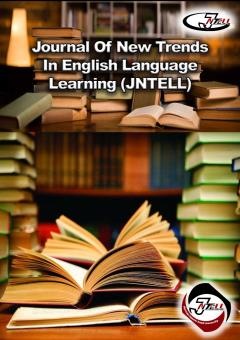Translators' Gender and Transference of Aesthetic Factors in the Translation of Rhymed Prose Reza Keramat1, Hafeze Raees Yazdi*2
محورهای موضوعی : Applied LinguisticsReza Keramat 1 , Hafeze Raees Yazdi 2
1 - Department of English Language Translation, Alborz Institute of Higher Education, Alborz, Iran
2 - Department of English Language Translation, Alborz Institute of Higher Education, Alborz, Iran
کلید واژه: gender, جنسیت, Translation quality assessment, ارزیابی کیفیت ترجمه, فرآیند ترجمه, translation process, Aesthetic factors, Rhymed prose, عوامل زیبایی شناختی, نثر قافیه دار,
چکیده مقاله :
The objective of the present research was to probe the probable relation between translators' gender and transference of aesthetic factors in the translation of rhymed prose. The purpose was achieved through descriptive, comparative, and relational tests and analysis. A translation protocol, consisting of 10 rhymed prose sentences which were translated by 25 female and 25 male BA students of English translation. These students were selected amongst 115 students through the series of processes. Translated rhymed prose sentences were assessed by two raters who were MA student of English translation with Waddington model of translation quality assessment. After analyzing the assessed papers, the researchers came to this conclusion that male participants mainly focused on the diction and form of rhymed prose sentences whereas female ones mainly focused on meaning and grammatical points. So male participants could transfer aesthetic factors better and it revealed that there was a relation between translators' gender and transference of aesthetic factors in the translation of rhymed prose. The researchers used T-test operation and concluded that the relation between above said issues was significant.
هدف پژوهش حاضر بررسی رابطه احتمالی جنسیت مترجمان و انتقال عوامل زیباییشناختی در ترجمه نثر قافیه دار بود. این هدف با استفاده از آزمون ها و تحلیل های توصیفی، مقایسه ای و رابطه ای محقق شد. یک پروتکل ترجمه شامل 10 جمله نثر قافیه دار که توسط 25 دانشجوی دختر و 25 دانشجوی پسر کارشناسی مترجمی انگلیسی ترجمه شده است. دانشجویان از بین 115 دانشآموز طی یک سری فرآیند انتخاب شدند. جملات نثر قافیه دار ترجمه شده توسط دو ارزیاب با تمرکز بر مدل کیفیت وادینگتون مورد ارزیابی قرار گرفتند. پس از تجزیه و تحلیل مقالات ارزیابی شده، محققان به این نتیجه رسیدند که شرکت کنندگان پسر عمدتاً بر روی لغت و شکل جملات نثر قافیه دار تمرکز کردند، در حالی که شرکت کنندگان زن عمدتاً روی معنی و نکات دستوری تمرکز داشتند. بنابراین شرکت کنندگان مرد توانستند عوامل زیبایی شناختی را بهتر منتقل کنند و مشخص شد که بین جنسیت مترجم و انتقال عوامل زیبایی شناختی در ترجمه نثر قافیه رابطه وجود دارد. محققان با استفاده از آزمون تی به این نتیجه رسیدند که رابطه بین موضوعات فوق معنی دار است.
Baker, M. & Saldanha, G. (ed.) (2009). Routledge encyclopedia of translation studies (2nd ed.). Abingdon: Routledge.
Beeby, A. (2000). Teaching Translation from Spanish to English. Ottawa: University of Ottawa Press.
Chamberlian, L. (1998). Gender and metaphoric of translation signs. Journal of women in culture and society, 13 (2), 454-472.
Fairus, R., & and Fauzi, A. (2017). The Role of Gender in the Process Translation. Journal of Applied Linguistics and Language Research, 4 (4), 66-82.
Farahzad, F. (1992). Testing achievement in translation classes. In C. Dollerup & A. Loddergard (Eds.), Teaching translation and interpreting (271-278). Amsterdam/Philadelphia: John Benjamins.
Ghodrati, M. (2009) Gender and translation accuracy. Islamic Azad university, Faculty of science and research, unpublished MA dissertation.
Golavar, E. (2009). The Effect of the Translator's Gender on Translation Evaluation. Translation Journal, 13 (2), April 2009.
Hurtado, S., Inkelas, K. K., Briggs, C., & Rhee, B. S. (1997). Differences in college access and choice among racial/ethnic groups: Identifying continuing barriers. Research in Higher Education, 38(1), 43–75
Mahjabin, J., Sayadian, S., & Naeimi, A. (2016). The role of gender in Persian translations of a thousand Splendid Suns based on Waddington’s model. Jostarnameh Comparative Literature, 2(3), 140-164.
Moghaddas, B. (2013). The Effect of Gender in Translation Accuracy of Iranian English Translators. International Journal of Management and Humanity Sciences, 2 (3), 227-236.
Munday, J. (2001). Introducing translation studies: Theories and applications. New York: Routlege.
Nida, E. (1993). Language, Culture and Translation. Shanghai: Shanghai Foreign Language Education Press.
Sainz, J. M. (1992). Student-centered Correction of Translation. Amsterdam/Philadelphia: John Benjamins.
Shafiee, S. S., & Rabeie, A. (2011). The Effect of the Translator's Gender Ideology on Translating Emily Bronte s Wuthering Heights. The Journal of Teaching Language Skills (JTLS) 3(3), 22-35.
Waddington, Ch. (2001). Different methods of evaluating student translations: The Question of Validity. Meta, 4(2), 311-325.
Wardhaugh, R. (1990). An Introduction to Sociolinguistics. Oxford & Cambridge: Basil Blackud.
Yule, J. (1996). The Study of Language. Cambridge: Cambridge university press.


